Buying a handgun can become a challenge, and your reasoning for picking one should be governed by the “why?” question. Why do you need it?
Owning and using a firearm requires a great deal of responsibility, and these tools shouldn’t be bought on an impulse.
You shouldn’t get a pistol because it’s the right or the cool thing to do, and you should buy a handgun because you need it. A handgun is not a toy or an accessory that can be flashed around whenever your feel like it, and in untrained hands, these tools can become dangerous.
Hopefully, this article will provide you with some pointers on why you need a handgun and how to narrow down your search.
Doing your homework
Before you buy any firearm, you should have an idea of what you’re looking for, how much you’re willing to spend on it, and your main reason for purchasing the firearm. If you want to get a handgun, this research will help you figure out if you need a semi-automatic or a revolver.
You should stick to your homework and your personal beliefs, and you shouldn’t let the person behind the counter convince you otherwise. Most often, they will sway you one way or the other, and you may end up leaving the shop with something that isn’t exactly what you needed or wanted and for which you’ve paid more than you can afford.
You don’t have to feel pressured to buy something right then and there, and it’s wiser to shop around until you’ve found what you’re looking for.
Also, another thing that becomes mandatory is doing a little bit of research and learning about the legal rights and implications of owning a firearm.
Various laws and responsibilities govern handgun ownership and usage, and these may vary from one jurisdiction to another. For example, you should learn about areas where you expect to carry your gun and research the limitations you may encounter.
If you want to go with a semi-automatic pistol, you should know that these handguns use a detachable magazine that feeds the ammunition. The gas expelled from the first round will drive the bolt back and allow another round to be automatically fed into the chamber. You can fire several shots depending on the magazine’s capacity, which varies depending on the ammunition used and other factors.
If you go with a revolver, you have to keep in mind that these handguns operate thanks to a mechanical system involving a rotating cylinder that holds the rounds. Pulling the external hammer will rotate the cylinder, and a round will be put into the firing position.
Also, revolvers are single or double action, and this means that a single-action revolver will require for the hammer to be pulled manually each time you shoot, while a double-action one will automatically rotate the cylinder with every squeeze of the trigger.
The problem with revolvers is that these handguns can hold six rounds, which is not nearly enough for many folks. Some can hold less or more, but this depends on the size of the handgun and ammunition used.
How will you use your handgun?
The reasons for owning a handgun may vary from one person to another, and most folks will get one for self-defense purposes. However, some may need a handgun for their hunting trips, while others may want one to shoot targets at the range.
If you intend to use your handgun for one of the above-listed reasons, you have to pick one from the many types available on the market. You can pick a semi-automatic or a revolver. There are short barrel and long barrel ones, and as for calibers, there are way too many to list here. Your job is to narrow your choices down and find the handgun that serves your purpose.
Target shooting
If you plan to buy a gun to shoot targets at the range, you can’t go wrong with either a semi-automatic or a revolver, preferably chambered for .22LR. Such handguns are an ideal choice for teaching people how to shoot, and they can also be used to practice firearms safety. Some of the people I see at the range regularly use handguns with a 4- or 6-inch barrel, and they swear these are perfect for target shooting practice, so you may want to look into that.
Self-defense
Picking a handgun for personal protection is a little more complicated and requires thorough research on your side. I can recommend going to a place where you can try different firearms and different calibers. There are shooting ranges that allow you to rent various handguns and shoot them, and in my opinion, trying a gun is the first step in figuring out if the handgun is something you can handle or doesn’t meet your needs.
Compared to target shooting, a .22 is not the caliber you want for self-defense purposes, and you will have to pick other calibers with better stopping power. For example, for personal protection, the most popular calibers are .380, .38, .38 special, 9mm, .357 Magnum, .40 and .45ACP. Once again, you have to research this topic and try different calibers before figuring out what you can handle.
Another thing you have to keep in mind is that handguns for personal protection should be light and easy to use. Also, you should be able to conceal and carry your firearm of choice easily. Since, in a self-defense scenario, the probability of making long shots is low, you can pick a handgun with a short barren (4-inch and under) since these can be easily concealed and carried.
Hunting
While handguns are rarely used for hunting, most hunters I know (including myself) carry a handgun as a backup solution. For example, I often carry my Smith and Wesson .45APC M&P Shield or my Glock G21 G4 .45ACP when I go hunting, even if I’m hunting birds.
When turkey hunting, I’ve often encountered a bear or a coyote, and at one time, I had to fire my handgun to scare away a moose that was grunting and stomping its feet. If I have an unexpected encounter with a dangerous animal, I don’t want to put all my luck in birdshots.
Some use a handgun for hunting, but their firearm is mainly used to bring down small game such as rabbits, squirrels, porcupines, and the like. In their case, a long-barrel handgun chambered in .22LR may be enough. However, if you’re looking at greater distances and accuracy, you will need a handgun with a long barrel, and these tend to be heavier.
Carrying your pistol
You most probably plan on carrying your handgun almost everywhere you go, which means you should be able to do so safely.
Most new gun owners rely on the firearm’s mechanical safety to prevent accidents from happening, but accidental discharges can and do happen all the time. You need to keep in mind that some firearms may have no mechanical safety while others have more than one, and this requires you to learn and know everything about your gun.
Your handgun may go off if you drop it or when you accidentally touch the trigger when drawing it from the holster. For example, those carrying a revolver are often taught to let the hammer rest in an empty chamber when carrying their handgun.
To be on the safe side, you need to buy a holster that fits well with your handgun, your body type, and your lifestyle. It’s recommended to try multiple holsters before you settle on a specific model to get the feel of each and see how it fits your body type while wearing different clothing.
You should never broadcast that you’re carrying, and people around you should never know if you’re carrying or not. Your handgun is not a piece of jewelry that you can wear and show off whenever you feel like it.
Also, it is recommended to keep your handguns locked when you are not using or cleaning them. When securing your firearms, both handguns and long guns, there are many options to make sure they aren’t easily accessible.
Most folks think about a gun safe when they decide to secure their guns, but you can very well display them in a glass cabinet if you equip them with a gun trigger lock or a cable lock. Once again, a little bit of research goes a long way when deciding how to secure your firearms.
Training
Just because you bought a handgun, that doesn’t mean you know how to use it or at least how to properly (and safely) use it. As a new gun owner, it’s your responsibility to learn and fully understand how your firearm works.
Every gun has a learning curve, and eventually, you will learn how to solve problems with your handgun’s operation, how to carry it safely, and how to use it for its intended purpose.
You can start first by reading the manual that comes with your firearm, and you need to do so before you load the first round in it. Before you head to the range, you should do yourself and those around you a favor and learn everything you can about your handgun.
If it’s your first time handling a firearm, you should take a firearm safety class taught by a professional where you will learn the basics and practice proper control of your handgun. Every shooting course for beginners should spend a lot of time detailing and teaching firearms safety, proper stance, and gun control.
A good instructor will make sure the students know the mechanics of their firearms, and they will make sure no safety rule is violated. They will watch the students and make sure they are doing what they were taught. When they fail to do so, they will need to correct them and start things from the beginning.
Concluding
If you decide to buy a handgun, you owe it to yourself to learn everything about that firearm and receive proper training. Do a little bit of research about the type of handgun you need and establish what you will use it for. This will help you narrow down the search, and you will also figure out what carry options you have and what accessories you can get for your firearm.
A handgun is a powerful tool, and regardless of its purpose, you should treat it with the utmost respect. You owe that to yourself and your loved ones, but also people around you.


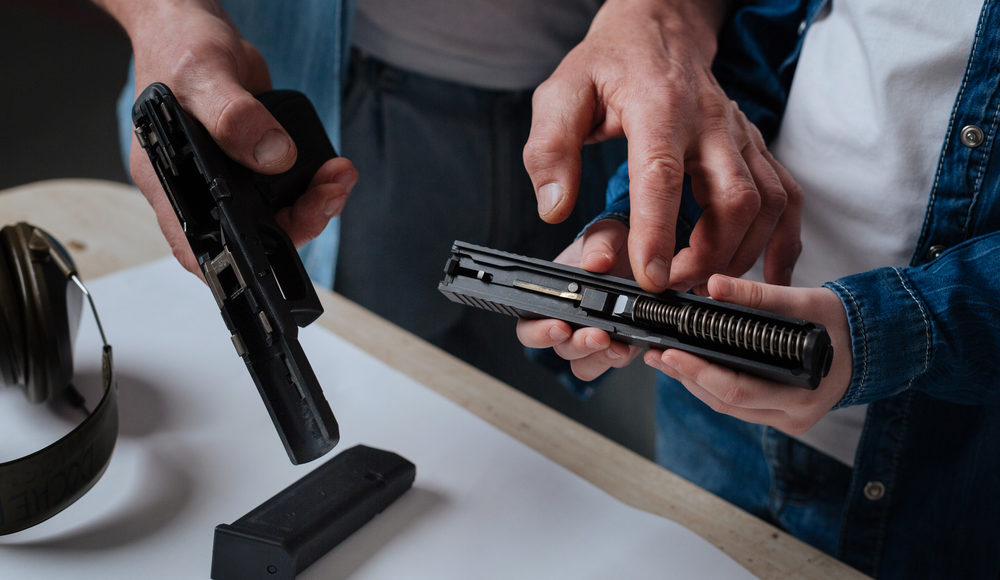


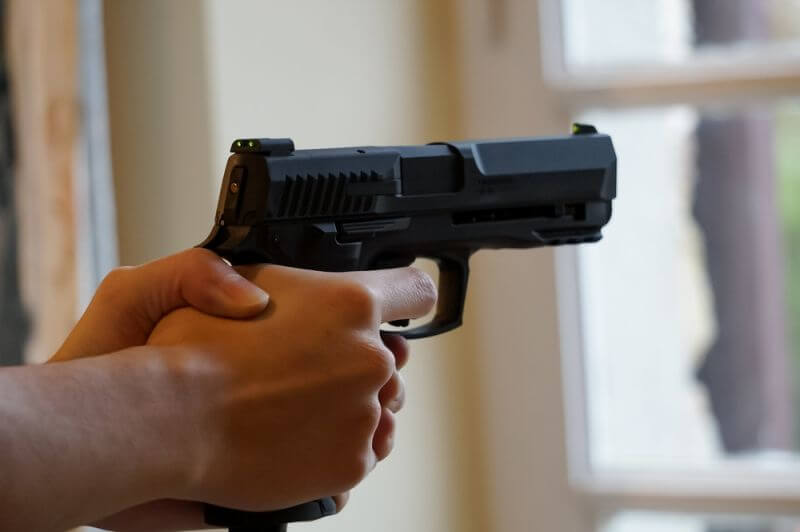
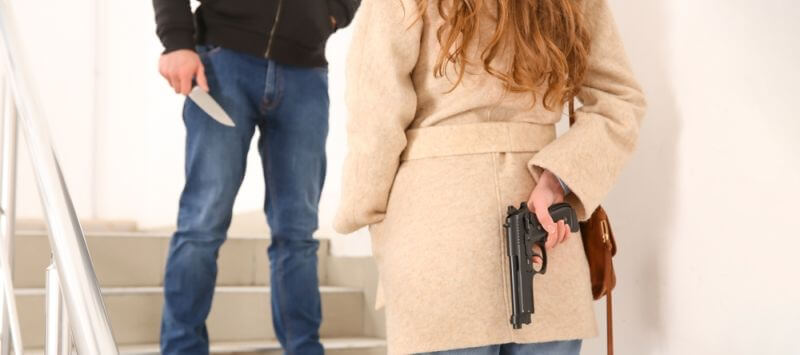
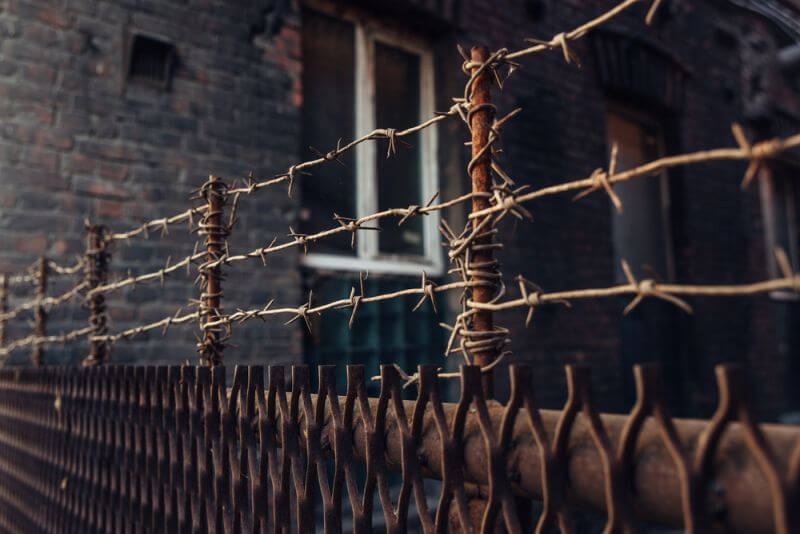
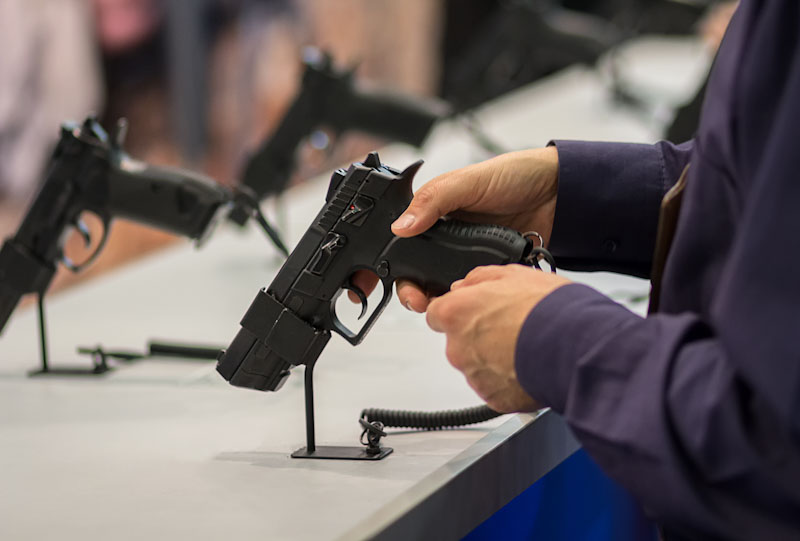


Phantom30 | December 17, 2021
|
Good balanced article. Personally, I find that the tactile features of a Springfield XDM are beneficial for carry and self defense. Especially during the bump in the night when your not going to need to look at the weapon to understand its readiness. A 9mm with Sig V-crowns gives the desired punch and larger capacity carry. A pistol should be a backup for something truly mission specific.
Garrett B Tarver | December 17, 2021
|
Don’t give me no plastic gun honey let me feel the steel
(Plastic Saddle-Nat Stuckey)
I want a gun I can pistol whip the bad guy into a coma with !!
Bill | December 17, 2021
|
Excellent article especially not letting the person behind the counter influencing what to buy. If you don’t like the feel of a weapon or its looks you aren’t going to practice with it.
Phantom30 | December 1, 2022
|
Thanks but I think I’ll stick with my AR pistol, an 8.5″ 1/7 twist 300 blackout works really well for most defense applications and out performs all suggested other pistols. Plus it can hunt deer and hogs. Ammunition flexibility is 240gr subsonic to 2300fps 110gr no lead copper bullets. And it is a good concealed carry weapon. For the pistol whippers you can also put a bayonet on it. Once you own an AR lower you can swap tops for shotguns and long range sniper capabilities, so great affordable versatility.
Dave | December 1, 2022
|
Pretty good article. A missed mention was once you pick a sidearm…learn how to field strip, clean, lube and re-assemble…then, how to do a function and safety check. This is essential for semi-auto sidearms.
Never buy a firearm because of the caliber. Pick one that you can shoot and control the recoil. Many people will buy a smaller caliber, learn to shoot, control recoil and then trade-in or sell and buy a larger caliber, but some people will, because of weak hands or arthritis stay with a smaller caliber. Some people subscribe to the idea that a .45 is the only caliber worthy of self-defense, simply due to it having the best ‘knock-down’ potential, but others say that shot placement is the most important. I was trained on a .45 in the military and it was my regular sidearm, but now, I carry a 9mm and use the best self-defense loads I can find. Some of the more ‘modern’ self-defense loads in 9mm pack a very nice wallop. That is my choice, though and each person should make-up their own mind and carry what they are comfortable with.
Once you pick your sidearm, make sure you know exactly how to use it. In other words, get instruction from ‘reputable’ instructors and then…practice. On carrying your sidearm, I agree with the article. Carry concealed and do not advertise that you are even armed and never draw your weapon unless it is an absolute necessity. ‘Know’ your state and local laws on ‘CC’. Remember, even ‘good intentions’ could put you behind the ‘8-ball’ in court. Even if your state has ‘Constitutional Carry’ I recommend a good ‘CC’ course that has professional instructors.